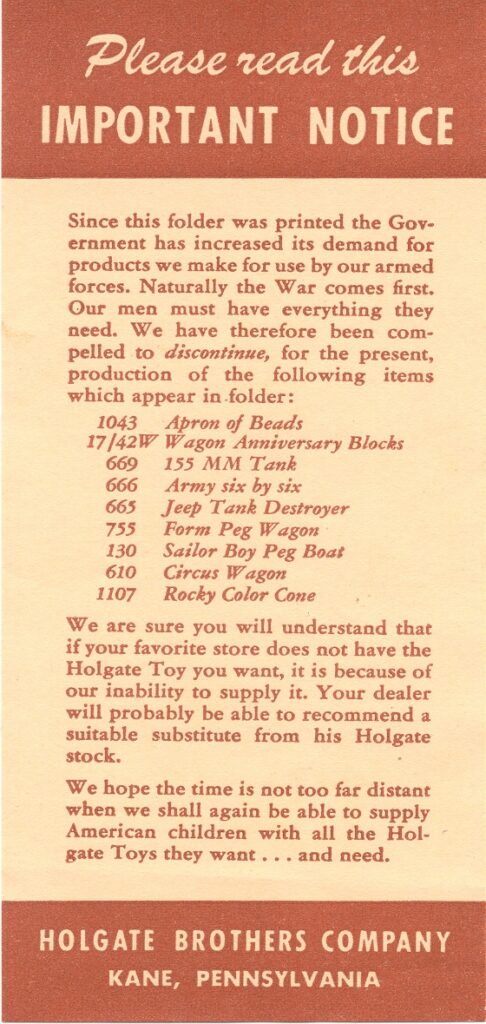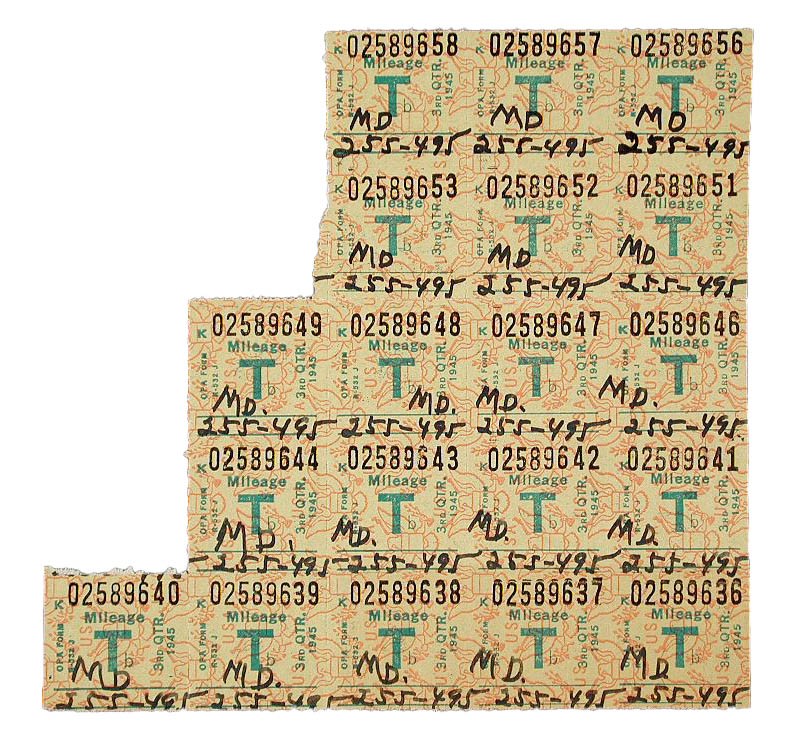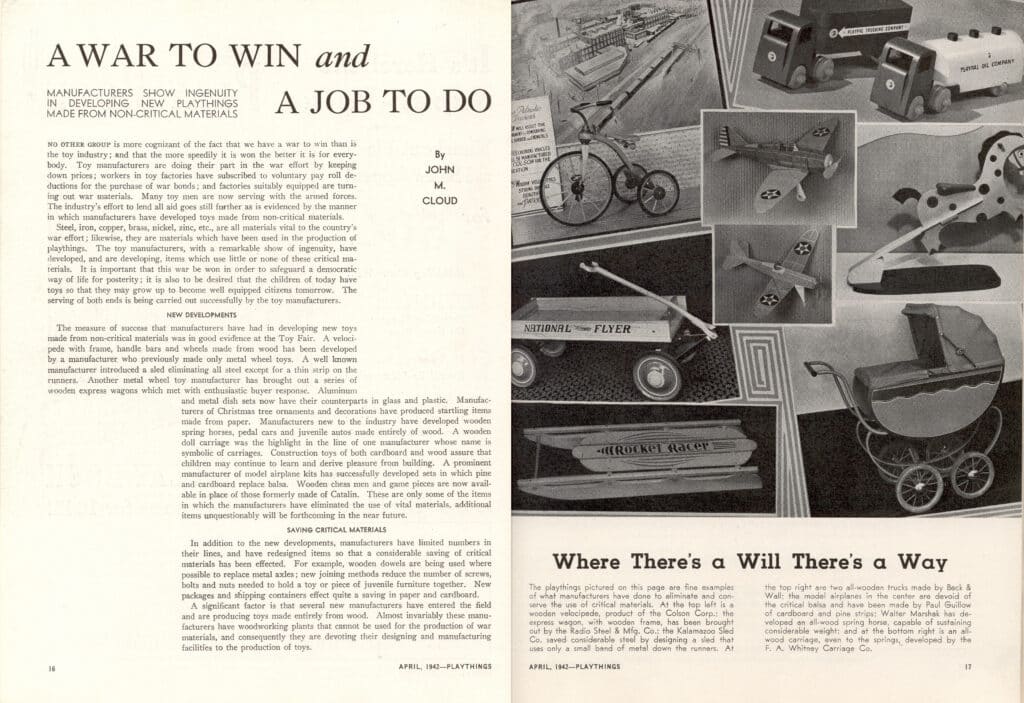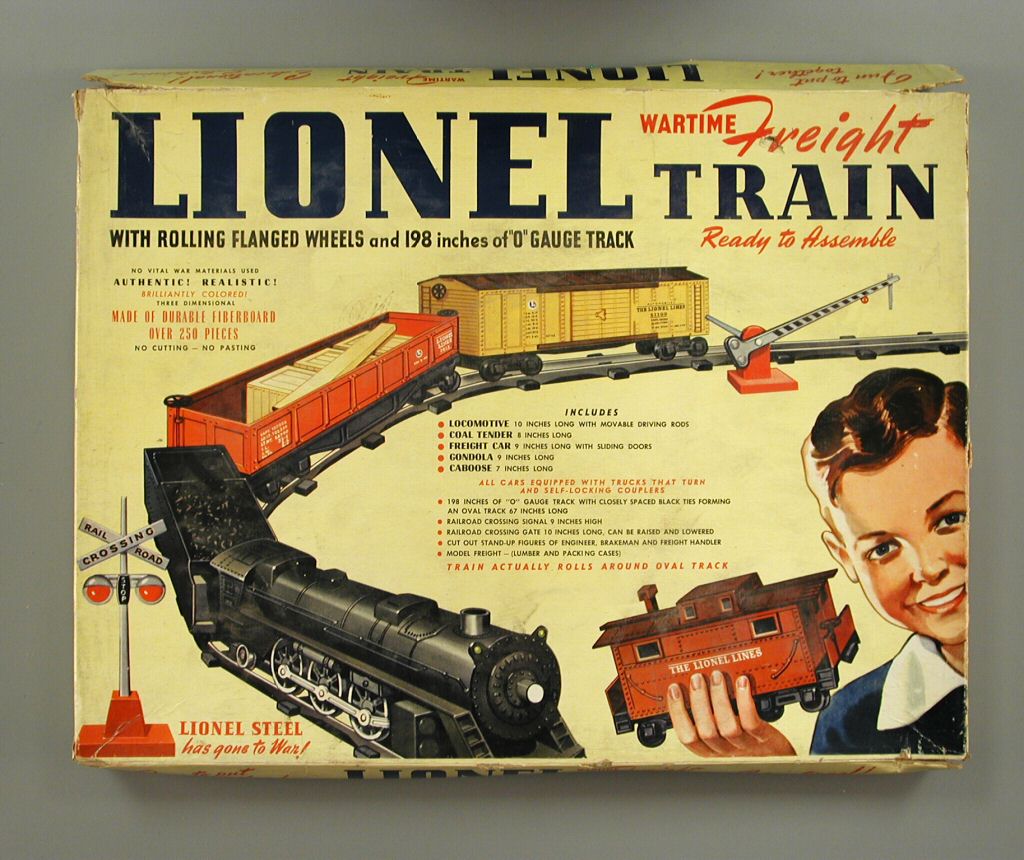
Administration, 1945, The Strong,
Rochester, New York.
Life at The Strong provides me with access to wonderful historical resources. As cataloger for the Brian Sutton-Smith Library and Archives of Play, I typically deal with toy trade catalogs that date from the 1960s through the 1990s. Recently, however, I’ve dealt with some older catalogs from the 1930s through the 1950s. As I worked with a 1942 pamphlet from Holgate Brothers Company, a small slip of paper tucked in it caught my attention. It was a notice from the company to retail stores about discontinuing certain toys in an effort to comply with wartime limitations.
My curiosity piqued, I started researching 1942 issues of Playthings magazine, the primary trade publication for the toy industry, and I immediately encountered multiple references to the war. I also consulted books on World War II in the library including Toys Go to War: World War II Military Toys, Games, Puzzles, and Books by Jack Matthews and To Win the War: Home Front Memorabilia of World War II compiled by Stan Cohen. I learned that although the Great Depression had inspired efforts to conserve materials, only after the United States officially entered the war following the attack on Pearl Harbor on December 7, 1941, did frugality become more than a personal virtue. American civilians entered a new world where food, gasoline, and other resources were officially rationed. Supplies of rubber, metal, and rayon, for example, were considered critical to the war effort. President Franklin D. Roosevelt established the War Production Board (WPB) in January 1942 to oversee the use of critical materials within each American industry and the conversion of civilian factories into war production facilities.

The Strong, Rochester, New York.
The January 1942 issue of Playthings documents the toy industry’s awareness of the War Production Board and the ways its orders would eventually affect their business. Many of the issue’s editorials and articles focused on how to successfully adapt product lines, suggesting that manufacturers consider alternatives such as making games and toys using wood. On March 30, 1942, the WPB issued General Limitation Order L-81 prohibiting the production of toys that contained critical materials (iron, steel, zinc, and rayon) that made up more than 7 percent of their weight. Existing toys with content over that amount could be sold until June 30, 1942.

Rochester, New York.
The WPB order and related material shortages inspired toy manufacturers to come up with creative ways to continue production. Paper dolls, puzzles, and games increased in popularity thanks to their widespread availability. Toys, board games, and hobby sets with military and war motifs also became standard playthings. Ingenuity developed out of necessity. For example, Lionel Corporation, famous for its trains, produced military items such as compasses during the war. However, in an effort to stay connected with its toy customers, Lionel created the Wartime Freight Train made entirely out of heavy-duty paper stock. It wasn’t the same as a Lionel electric train, but it was the best the company could offer under the circumstances.

The War Production Board remained in effect until late 1945 when the Allies declared victory. Once the war ended, manufacturers resumed their pre-war production and the toy industry experienced a surge in sales from the post-war baby boom. Material shortages were a thing of the past, and a new era of toys and games emerged, but I’m delighted I could learn about this significant wartime episode in the history of playthings.
By Tara Winner-Swete, Cataloger



